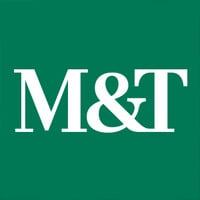
M&T Bank
Great companies have an enduring sense of purpose. At M&T, our purpose is a simple one: make a difference in people’s lives and uplift the diverse communities we serve. Founded in 1856 in Buffalo, NY we are now a top 11 full-service US-based commercial bank with a retail footprint across the east coast and wealth services available nationwide and abroad. As a bank, we offer advice, guidance, expertise, and solutions across the entire financial spectrum that combines M&T’s traditional banking services with the wealth management and institutional capabilities offered by Wilmington Trust. We are a community-minded organization with more than 167 years of experience. We serve customers, community, and colleagues whether they be across the street, across the state or across the country. As an employer of choice, we are proud to offer competitive benefits ranging from medical and retirement to forty hours of paid volunteer time, each year. Our core values drive the work we do – integrity, ownership, collaboration, curiosity, candor and we seek to further build upon our record of success by bringing in diverse talents and fresh skill sets while continuing to support the growth and development of all our team members. M&T Bank Corporation is an Equal Opportunity Employer, including disabilities and veterans.






